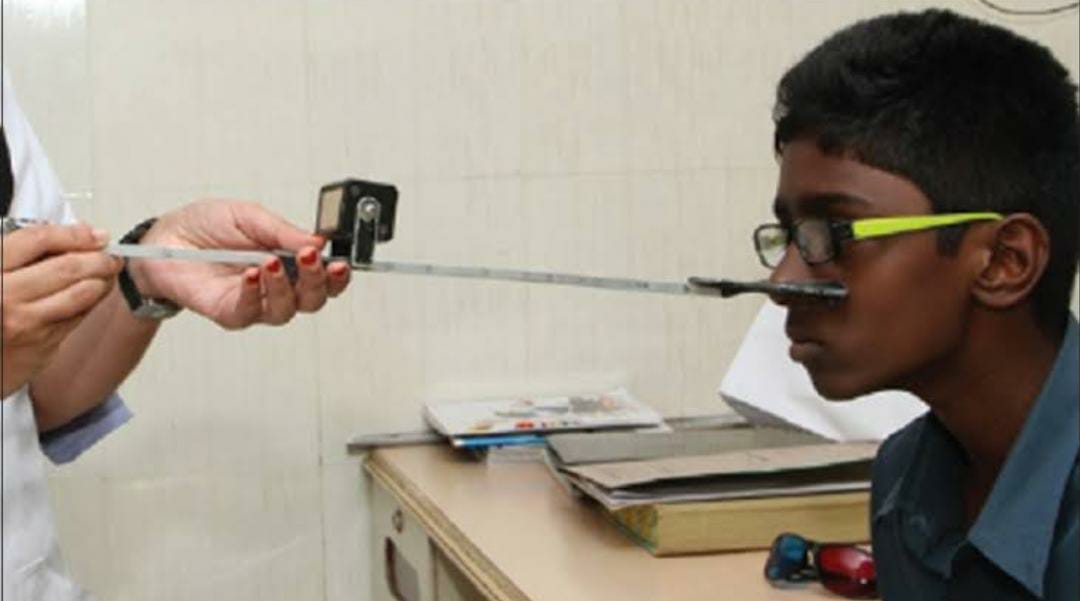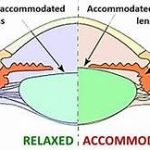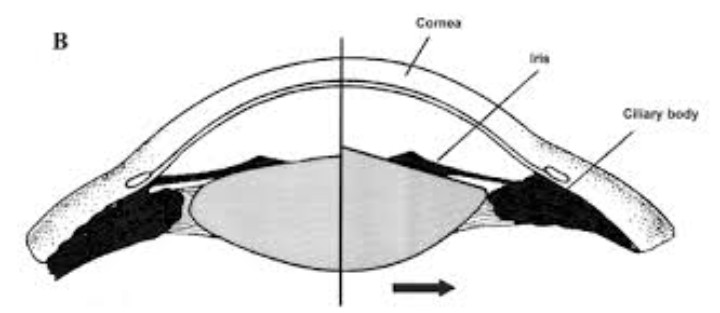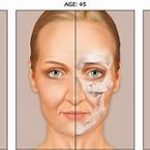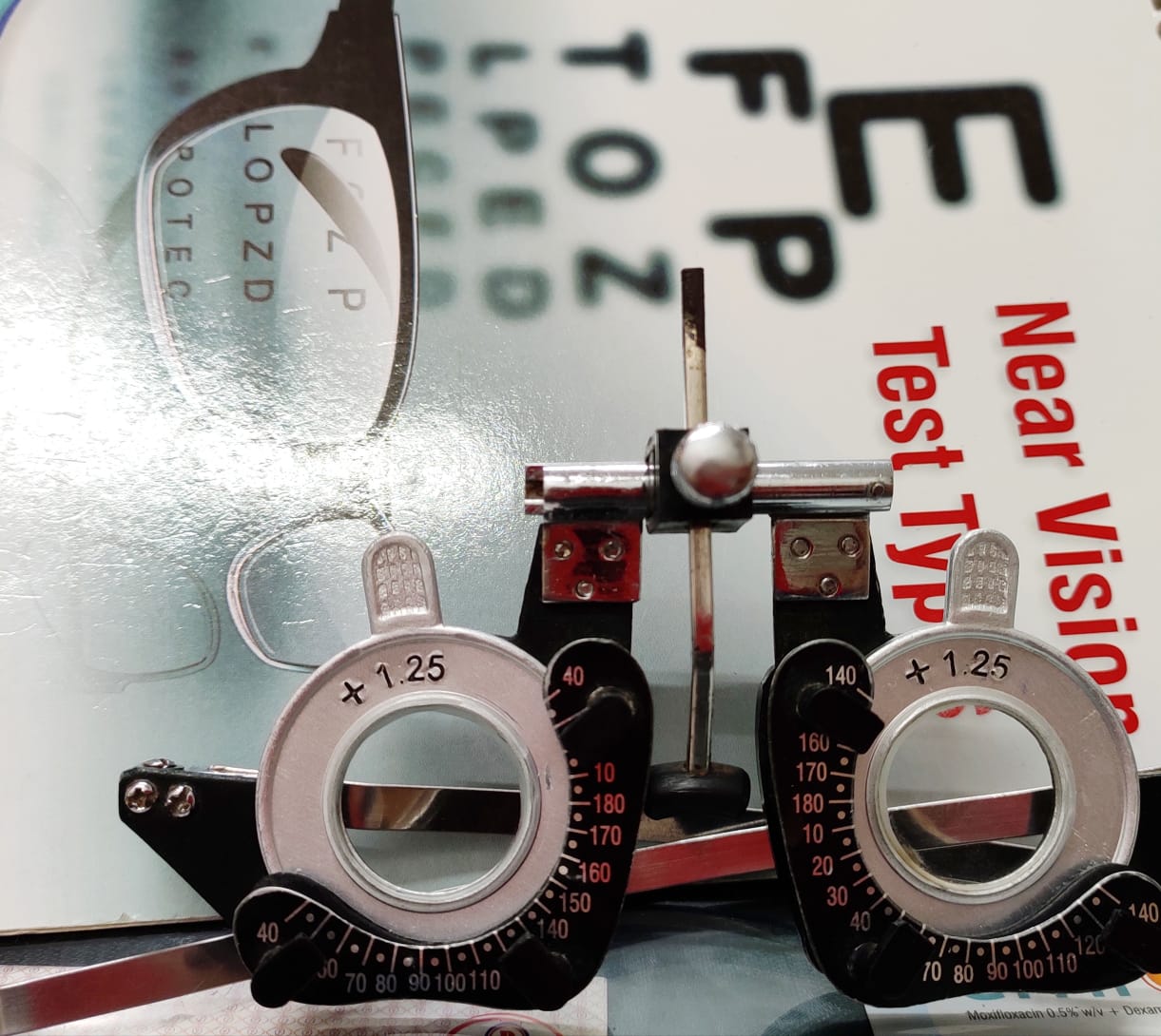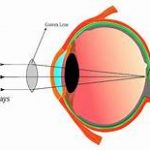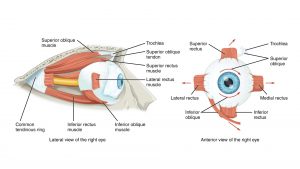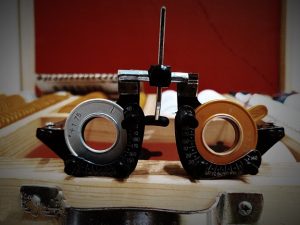In emmetropic eye parallel rays of light coming from infinity refract & focus on the retina, when accommodation at rest.
Accommodation: It is the unique ability of eye to focus the diverging rays coming from a near object to see it clearly by changing the power of the crystalline lens which is the result of contraction of ciliary muscle.
As we got to know what accommodation is. Let’s dig in to the components of it.
- Near point of accommodation: It is the nearest point at which small objects can be seen clearly. That is why it is called Near point of accommodation or Punctum proximum.
- Far point of accommodation: It is the distant or the farthest point where small objects can be seen clearly. That is why it is called Far point of accommodation or Punctum remotum.
- Range of accommodation: The distance between the near point of accommodation or punctum proximum remotum is called range of accommodation.
The normal range of accommodation of an emmetropic eye is –
Amplitude Of Accommodation: Amplitude of accommodation is the dioptric difference between the far point and near point of accommodation.
If we consider.
The power needed to focus at near as P
The power needed to focus at distance R
The power of accommodation A Then,
A=(P-R)
Punctum proximum and punctum remotum vary with the refractive errors of the eye.
- In Hypermetropic eye punctum remotum is virtual and lies behind the eye.
- In myopic eye punctum remotum is real and lies in front of eye.
- In emmetropic eye punctum remotum is at infinity and punctum proximum various with the age. It moves further with the age.
- At the age of 10 years punctum remotum is about 7cm in front of the eye.
- At the age of 40years it is about 25cm in front of the eye.
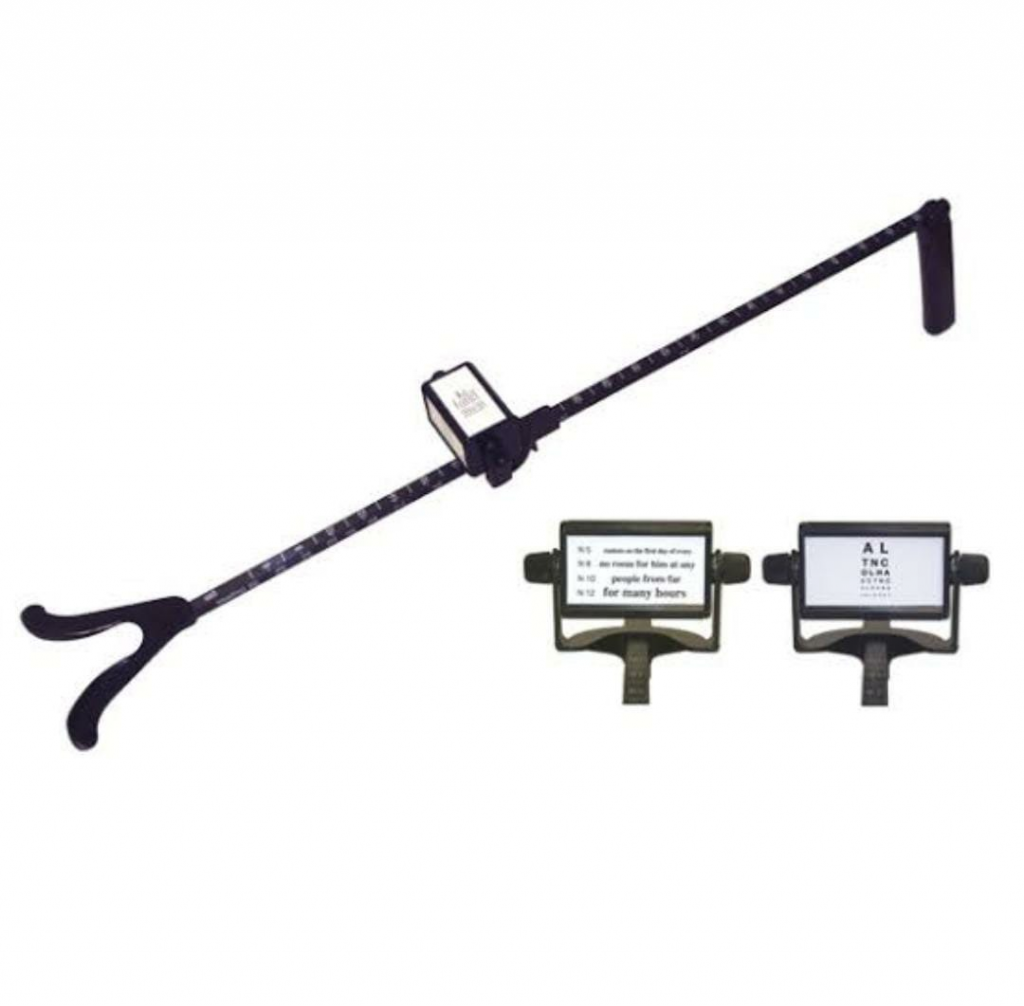
Assessment of Amplitude of Accommodation: Amplitude of accommodation can be assessed by five methods. Which are – push – up, push-down, push down to recognition, mins lens & dynamic retinoscopy. Four of the methods are completely subjective. Only the dynamic retinoscopy is relies on the clinical interpretation that is why the method of dynamic retinoscopy is partly objective.
The full objective clinical assessment of Amplitude view autorefractometer. But it is not practiced as much in optometric field.
- Push-up: This method is omnipresent the ‘commonestand simplest’ clinical technique to asses amplitude of accommodation.
In this procedure full refractive correction far distance is given to the patient. Then the patient is asked fix the but corrected near vision target at a distance where the target can be seen clearly.
Then the near vision target is moved closer till the patient reparts first sustained blur. The test object is then said to be at the eye’s near point and its distance to the eye or spectacle plane is measured. Then recarded measurement which is in meters is converted to it’s reciprocal to provide the dioptric value of amplitude of accommodation.
- Push-down: The push down method considered as a variation of push-up method. In this procedure the test target is moved away until the patient reports when it first becomes clear. Then the distance is measured and converted into dioptric value.
- Push down to recognition: This procedure is very similar to the push down method except the end-point is when the patient first recognizes the target object as it is moved away from the eye.
This process is termed as ‘modified’ push-up method.
- The above mentioned three methods can be measured by uniocularly or binocularly.
Measurement of Amplitude of accommodation by using Mines Lens: Far this process the patient is given his/her full refractive correction and each eye is tested separately.
Then the patient is asked to fixate the best corrected near vision target at 40cm distance and mins of progressively in creasing power are added before the eye until the patient reports the first sustained blur. +2.5D is added with the power of this mins lens for 40cm distance of testing. That is equivalent to the amplitude of accommodation in diopters.
For example: At 40cm distance of testing, If the patient reparts blur with -2D spherical lens, then equivalent amplitude of accommodation would be 2+2.5=4.5D.
Dynamic Retinoscopy: In this procedure is determined by the practitioner with the observation of retinoscopic reflex. This procedure is performed in those patients who are having difficulties in communication, And far this procedure a skilled practitioner is needed far proper assessment of amplitude of accommodation.
